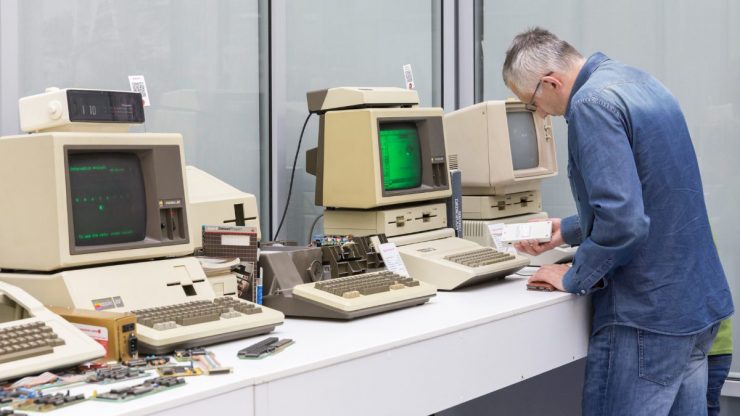Upgrades are part of life. Something that looked good five or ten years ago may have outlived its purpose, and the ATS (applicant tracking system) is no exception. Typically, once you buy the new product or implement the new system, you wonder how you lived without these now basic features for so long.
Candidates, recruiters, hiring managers, business leaders, and future employees are all impacted by a new ATS. Let’s look at common problems and their impact on people.
1. The application process takes too long
When candidates have to create a password and recreate their resume specifically for your system, they are less likely to apply. This impacts your applicant volume as well as your employer brand reputation, simply because most of your competitors have moved to systems that allow candidates to apply in five minutes or less. Read this post to discover six keys to reducing application drop-off.
2. High candidate drop-off rates or low offer acceptance rates
Candidates have bills to pay and careers to grow. They might be uninformed about the next steps and meet unprepared interviewers if your hiring process lacks the structure that can be provided by job-relevant workflows in a modern ATS. Additionally, an ATS with robust offer features enables recruiters to turn offers around quickly before the candidate jumps elsewhere.
3. Not enough relevant candidates
Not having enough relevant candidates can be the result of several system inadequacies. Here are common problems and solutions a new ATS may offer.
- Candidates don’t know enough about your company and its roles. This can be solved with a smart career site that delivers personalized, relevant content about roles, career paths, and the company culture.
- Your jobs aren’t reaching the right people. With better job distribution through programmatic advertising or job distribution software, you can reach more candidates and know exactly how they are converting so that you can adjust your spending accordingly.
- Applicant filtering. If you have a high volume of candidates but aren’t finding relevancy, you may benefit from AI-powered candidate discovery. By fine-tuning the AI with the most relevant skills, you can surface top candidates quickly.
4. Too many manual tasks
The best recruiters take time to build relationships with candidates, and they can’t do that if they spend much of their time re-entering candidate information, switching between systems, digging around in spreadsheets, or going back and forth with candidates and hiring team members to schedule interviews.
A modern ATS that integrates with multiple systems (e.g., HCMs, background checks, assessments, calendars in Microsoft Teams or Google Workspace) makes it easier for recruiters to manage tasks, schedule interviews, and keep candidate information in one compliant system.
5. Compliance is at risk
Keeping candidates’ personal information indefinitely in email and spreadsheets puts compliance at risk. Moving candidate data between systems adds another layer of risk. Robust compliance features in an ATS allow you to configure processes to the exact privacy requirements in your region within minutes rather than the days or weeks it might take to change data privacy settings in an older ATS.
6. Lack of accessible, actionable metrics
It shouldn’t take hours upon hours to pull and analyze good data for weekly check-ins or regular business reviews. When teams can access historical data on-demand, build custom reports, and get both granular and holistic views of the hiring process, everyone is empowered to become a strategic partner in the business. The analytics in a modern ATS equip you to build an actionable reporting strategy that will make your TA function truly data-driven.
7. Low trust in the talent acquisition function
The recruiting process can be a black box for hiring managers. Without an ATS that enables collaborative hiring, they don’t know how many candidates were reviewed, where they are in each stage, or what other interviewers may have found out. Candidate notes and interview scorecards create transparency and facilitate trust.
After using SmartRecruiters for a year, a customer at KinCare said, “It’s become more of a collaborative environment. When you’ve got transparency, you’ve got trust. Trust was no longer an issue.”
Upgrades create memorable shifts
The upgrade process for an ATS doesn’t have to be hard; minimal training is needed with a proven, easy-to-use system. Once your teams start using it, the results start to pour in: more qualified applicants, smoother hiring processes, and eventually, better quality of hire. Instead of old problems like manual tasks and complaints about botched interviews, your team will have exciting new challenges like optimizing processes and building better dashboards.
At JYSK, the effects of the new ATS were immediate as the team processed 50,000 candidates per month with greater efficiency to keep its 3,000 stores fully staffed.
It was really important that our new system would be easy to use for hiring managers in all our stores across many countries. We rolled out SmartRecruiters with a simple mobile training and optional webinars.
– Karolína Kroužková,
HR Digital Manager, JYSK
Are you ready to get started? Get in touch with us for a demo today.











